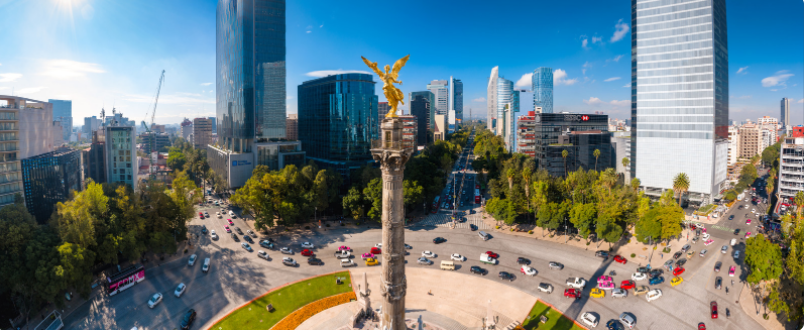
Presidential contenders discuss nearshoring strategies while the country grapples with structural challenges
Multinationals should expect moderate levels of foreign direct investment (FDI) in 2024 and 2025, as the transition of power and structural issues thwart nearshoring in the short term. Still, there will be growth opportunities in the semiconductor, electronics, electromobility, and medical device sectors. Moreover, the presidential transition will strongly impact infrastructure projects, fiscal incentives, and governance policies related to nearshoring. We assess that regardless of the presidential election results, most investments will concentrate in the northern-border, Bajío, and central regions.
Overview
- On April 28, Mexico’s presidential candidates debated economic development issues, with policies to leverage nearshoring constituting a central piece of each of the contenders’ platforms.
- Nearshoring—or the re-localization of supply chains closer to the end market—can be observed in FDI data, particularly in the manufacturing and business service sectors.
- Still, FDI in Mexico remains below its highest levels. In 2023, FDI represented 2.01% of the country’s GDP, while in 2013—the highest year in the last two decades—it reached 3.64% of GDP. The surge of FDI in 2013 could be explained by the approval of energy reform under former President Enrique Peña Nieto (EPN), which opened the sector to private investment.
- Average FDI levels as a percentage of GDP by presidential administration tell us a similar story. EPN had the highest average levels of FDI as a percentage of GDP, with 2.87%, while Andrés Manuel López Obrador (AMLO) has an average of 2.41%. Felipe Calderón Hinojosa (FCH) had the lowest average levels of FDI of the last five administrations, with 2.27%.
- Claudia Sheinbaum (MORENA, PT, PVEM), the leading candidate with 50.7% of voting intention, aims to implement an industrial policy favoring North American production to substitute Asian imports. While Sheinbaum has a positive view of nearshoring, she also claims that investments must align with the country’s energy policy, offer high-quality employment, respect local communities, and comply with high decarbonization standards.
- Sheinbaum wants to prioritize the semiconductor, electronics, electromobility, medical device, and agro-industrial sectors by leveraging each region’s comparative advantages and organizing them by “industrial corridors.”
- Xóchitl Gálvez (PAN, PRI, PRD)—who has 27.3% of voting intention—has centered her nearshoring platform on improving the rule of law, increasing investor confidence, and fostering public-private partnerships. She also wants to develop electricity transmission and distribution, railroad freight infrastructure, and eliminate the armed forces’ participation in public works.
- Jorge Álvarez Máynez (Movimiento Ciudadano), the distant third with 11% of voting intention, wants to boost public infrastructure investments to improve water management, reduce electricity costs, and improve tender transparency. Máynez proposes strengthening the federal system and has adopted an open view of public-private collaboration.
Our View
The three presidential contenders perceive nearshoring as a pivotal economic moment for the country. However, in H2 2024 and 2025, temporary and structural challenges will limit Mexico’s ability to catapult FDI. Some of these challenges include the power transition at the federal level, which tends to hinder growth and budget execution; ineffective governance and rule of law; limited infrastructure and connectivity, particularly in southern states; and limited resources like water, energy, and labor. Still, Mexico is likely to benefit from re-localization. Most FDI is expected to concentrate in industrialized areas, like the northern border, Bajío, and central regions.
At FrontierView, our mission is to help our clients grow and win in their most important markets. We are excited to share that FiscalNote, a leading technology provider of global policy and market intelligence has acquired FrontierView. We will continue to cover issues and topics driving growth in your business, while fully leveraging FiscalNote’s portfolio within the global risk, ESG, and geopolitical advisory product suite.
Subscribe to our weekly newsletter The Lens published by our Global Economics and Scenarios team which highlights high-impact developments and trends for business professionals. For full access to our offerings, start your free trial today and download our complimentary mobile app, available on iOS and Android.

